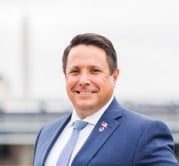Leadership is lonely—but you are not alone

When I was in command during my Air Force career, four primary responsibilities guided my daily actions: 1) execute the mission, 2) lead people, 3) manage resources, and 4) improve the unit. You don’t have to have served as a military commander to understand these duties as a leader. In fact, I believe most CEOs would agree these are basic responsibilities that accompany leading an organization.
While we could write many articles that expand on each of these duties, in addition to other responsibilities, there is one aspect of being a leader that is not widely discussed. It is: recognizing that the role of leadership itself can be lonely.
First off, leadership does still involve other people. Good leaders constantly practice and perfect their people skills as they rise within the organization. They are fully at ease in any crowd and are surrounded by others who seek to emulate the leader’s effect on people. So, why is it lonely?
When things are going well, everybody is your friend. As such, your LinkedIn profile is filled with connection requests, you are invited to speak at different conferences and events, and people seek you out during coffee breaks or lunch. In other words, leadership is the opposite of loneliness when times are good.
Let me be clear: I am not talking about those times, nor am I talking about those moments when you are alone in your office faced with making the call or major decisions.
The loneliness of leadership is often felt when things aren’t going so well. Maybe it’s when those people who celebrated with you when things were going well are suddenly absent if failure is on the horizon. Or maybe it’s when leaders are called to make an unpopular decision, particularly one that few would criticize if you looked the other way.
I saw commanders twist logic and interpretation of the rules to produce favorable outcomes many times throughout my military career. “Nobody really got hurt” or “the results speak for themselves” were among the justifications after the fact. Although “pushing the envelope” is something to expect in combat situations, it doesn’t translate very well during peacetime.
So, what happens when a leader decides on a course of action that is inconsistent with espoused industry or company core values and unpopular with the masses? If the leader is not concerned about culture, morale, or long-term effectiveness, then they won’t mind when others bend the rules. Remember, “the speed of the leader determines the speed of the pack.” This means there’s very little surprise when the organization gets fined, sued, or disbanded.
I have made plenty of unpopular decisions during my career, and I can tell you loneliness at the top is even more severe when you take a stand. I survived each of them and came out ahead. However, there are several things you can expect after making that “unpopular” decision.
Suddenly, you can expect to eat lunch all by yourself. People will talk behind your back, turn your picture to the wall, and avoid you in the hallway. Your LinkedIn support and engagement will likely take a nosedive. Plus, competitors will always seize the initiative. This aspect of leadership is never easy and can cause many moments of self-doubt. However, it is a price true leaders must be willing to pay.
Here is the good news (and the paradox of this article, like last month’s)—you are not alone!
Every leader makes unpopular decisions. There are industry standards, expectations, and cultural aspects that guide and enforce organizational behavior. Surround yourself with leaders who have made tough choices.
If there is any recipe for these situations it would be a) gather advice from trusted sources, b) mix in a few stories from those who have been there, c) ask questions, and d) be okay venting your frustrations with a trusted ally. Then, cover and allow adequate time to simmer. It’s always best to let things cool a bit before moving forward.
I would also ask that if you are afraid to make a few unpopular but necessary decisions along the way, then are you really leading anyone? What’s more likely is you are following the crowd and unfortunately won’t last long in your position. Leaders need to lead, not simply follow along. And always communicate your intent and allow your principles and values to guide the way.
This gets me back to the four primary responsibilities we started with: 1) execute the mission, 2) lead people, 3) manage resources, and 4) improve the unit. Doing all four takes consistent effort. Whenever you compromise or take shortcuts, it will set you back in the long run. So, keep it simple, make sound decisions, and if you need someone to talk to, give me a call. You may be less alone than you think!

